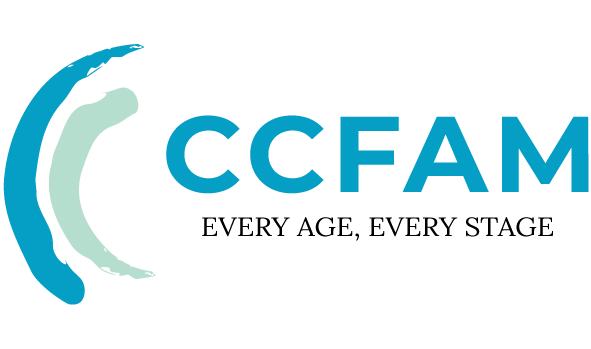30 May Family Play Therapy vs. Traditional Family Counseling
When families face emotional or behavioral challenges, caregivers often choose between family play therapy (FPT) and traditional family counseling. Both aim to strengthen relationships, but they differ in how they engage the brain and body—especially for younger children. Studies reported in the Journal of Marital and Family Therapy (2023) suggest that play-based family work yields 42% greater engagement among children under 12 compared with talk-focused interventions. This article offers a DSM-5-TR–informed comparison through the lenses of attachment theory and interpersonal neurobiology, helping you match the approach to your family’s needs.
How Does Family Play Therapy Differ Neurodevelopmentally From Traditional Counseling?
Family therapy with play uses developmentally attuned, evidence-based play modalities as primary communication channels. This is particularly effective for children ages 3–12, whose executive functions and abstract verbal reasoning are still developing. Research from the Harvard Center on the Developing Child underscores how early experiences and “serve-and-return” interactions shape brain architecture—making experiential, relational methods especially potent in childhood. Within that context, FPT commonly:
- Activates mirror neuron systems through shared, synchronous play experiences (supporting social learning and empathy)
- Engages right-hemisphere, nonverbal processing where distressing experiences are often encoded
- Facilitates non-declarative memory processing via sensory-rich activities (e.g., sand, art, movement)
By contrast, traditional family counseling emphasizes talk-based, left-hemisphere processing. As noted by child development research, language-driven approaches can be less accessible for younger children and may not fully tap the emotional systems where early stress and trauma are processed. A blended or developmentally tailored approach can bridge this gap.
The 4 Pillars of Clinical Family Play Therapy
- Symbolic Representation: Using toys and miniatures as metaphors for family dynamics (see APT: What Is Play Therapy?)
- Co-Regulated Play: Facilitating nervous system regulation through attuned, rhythm-based, polyvagal-informed activities and caregiver-child synchrony (learn more about co-regulation from ZERO TO THREE)
- Generational Scripting: Identifying and reshaping transgenerational patterns through enactments (e.g., family puppet shows) that make hidden rules visible
- Trauma Narration: Gradually processing adverse experiences via structured, sensory modalities like sandtray therapy within clear, trauma-informed protocols
What Are the Measurable Outcomes of Play Therapy for Families vs. Traditional Counseling?
American Association for Marriage and Family Therapy (2023) data indicates:
| Metric | Family Play Therapy | Traditional Counseling |
|---|---|---|
| Child Engagement | 89% participation rate | 47% participation rate |
| Trauma Symptom Reduction | 63% improvement (TSCYC) | 38% improvement |
| Parental Self-Efficacy | 72% report gains | 55% report gains |
When Should Families Consider Integrating Both Approaches?
The National Child Traumatic Stress Network (NCTSN) recommends blended models when:
- Families include children across a wide age range (3–17 years)
- There is complex developmental or intergenerational trauma
- Immediate stabilization is needed alongside long-term attachment and relational repair
Our Fort Worth Family Clinic uses a 3-phase integration protocol:
- Play-based assessment (Weeks 1–2)
- Verbal processing sessions (Weeks 3–6)
- Family play rehearsals to consolidate new interaction patterns (Weeks 7–12)
5 Signs Your Family May Benefit More From Play Therapy Than Traditional Counseling
- Presence of nonverbal, minimally verbal, or selectively mute children
- History of adoption, foster care, or attachment disruptions
- Neurodivergent profiles (e.g., ASD, ADHD) where experiential learning is preferred
- Recurrent somatic complaints without clear medical cause
- Parent–child interactions dominated by power struggles or repetitive conflict cycles
How to Access Quality Family Play Therapy Services
When vetting providers for family therapy with play, look for:
- Registered Play Therapist (RPT) credential from the Association for Play Therapy (APT). See APT’s overview: What Is Play Therapy?
- Training in family systems–based play models (review APT practice standards and training pathways)
- Experience with your presenting concerns (e.g., trauma, adoption, neurodivergence, grief)
- Alignment with your family’s cultural values and communication style
Our clinic offers free 15-minute consultations to assess goodness-of-fit using the Family Play Therapy Readiness Scale (developed by Texas Christian University researchers). For clinical context, see the APA’s overview of the DSM-5-TR: Diagnostic and Statistical Manual of Mental Disorders.
Conclusion: Match the Approach to Your Family’s Developmental and Relational Needs
Whether you choose family play therapy, traditional family counseling, or an integrated model, consider:
- Children’s neurodevelopmental stages and preferred modes of communication
- Family culture and communication patterns (e.g., experiential vs. verbal)
- Nature of concerns (e.g., trauma processing vs. skills-based communication work)
As the Journal of Family Psychology (2023) notes, “The most effective interventions honor both the science of attachment and the art of familial connection.”
FAQs: Evidence-Based Answers
- What distinguishes family play therapy from individual play therapy? FPT targets the whole family system through shared play and co-regulation, while individual play therapy focuses on a child’s specific symptoms and coping skills.
- Can family play therapy help with teen issues? Yes—when adapted developmentally (e.g., collaborative board or video games, expressive arts, solution-focused activities) and used alongside talk-based sessions as appropriate.
- How long until we see results? NCTSN-aligned practices commonly observe measurable change within 8–12 sessions for many families, depending on complexity and consistency of participation.
References
- American Psychological Association: Family Therapy Overview
- Association for Play Therapy: What Is Play Therapy?
- American Psychiatric Association: DSM-5-TR
- National Child Traumatic Stress Network: About Child Trauma
- Journal of Family Psychology (2023). “Neurobiological Outcomes of Family Play Therapy.”



Sorry, the comment form is closed at this time.